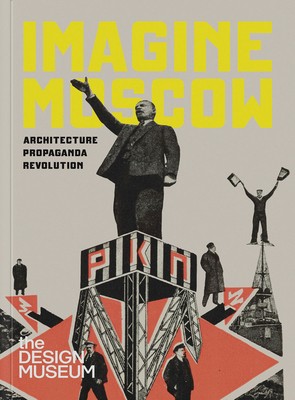
- We will send in 10–14 business days.
- Publisher: Design Museum
- ISBN-10: 1872005349
- ISBN-13: 9781872005348
- Format: 13 x 18 x 1.8 cm, kieti viršeliai
- Language: English
- SAVE -10% with code: EXTRA
Imagine Moscow (e-book) (used book) | bookbook.eu
Reviews
Description
The Soviet city that was never built: six visions of Moscow from the great architects of modernist Russia
After the October Revolution of 1917, Lenin moved the Russian capital from the imperial, westward-looking city of St. Petersburg back to Moscow, the traditional heart of Russia. Moscow was to be the ideal Soviet city, its factories, theaters, communal housing and government buildings representing the strength and potential of a new revolutionary society.
Imagine Moscow: Architecture, Propaganda, Revolution explores Moscow as it was envisioned by a bold generation of architects in the 1920s and early 1930s. Featuring rarely seen material, this book portrays a vision of the Soviet capital that was never realized but which still haunts the city today. Imagine Moscow focuses on six unbuilt architectural landmarks, each telling its own story about the city: Ivan Leonidov's Lenin Institute (1927), El Lissitzky's "Cloud Iron" (1924), Nikolai Ladovsky's Communal House (1919), Nikolai Sokolov's Health Factory (1927), the Vesnin brothers' Narkomtiazhprom (1934) and Boris Iofan's Palace of the Soviets (1932). Each of these projects introduces a theme relevant to life and ideology in the Soviet Union: collectivization, urban planning, aviation, communication, industrialization, communal living and recreation. Large-scale architectural plans, models and drawings are placed alongside propaganda posters, textiles and porcelain, contextualizing the transformation of Moscow as a city reborn. Edited by curator Eszter Steierhoffer, this book includes essays by writer Deyan Sudjic and architecture historians Richard Anderson and Jean-Louis Cohen.EXTRA 10 % discount with code: EXTRA
The promotion ends in 22d.03:35:07
The discount code is valid when purchasing from 10 €. Discounts do not stack.
- Publisher: Design Museum
- ISBN-10: 1872005349
- ISBN-13: 9781872005348
- Format: 13 x 18 x 1.8 cm, kieti viršeliai
- Language: English English
The Soviet city that was never built: six visions of Moscow from the great architects of modernist Russia
After the October Revolution of 1917, Lenin moved the Russian capital from the imperial, westward-looking city of St. Petersburg back to Moscow, the traditional heart of Russia. Moscow was to be the ideal Soviet city, its factories, theaters, communal housing and government buildings representing the strength and potential of a new revolutionary society.
Imagine Moscow: Architecture, Propaganda, Revolution explores Moscow as it was envisioned by a bold generation of architects in the 1920s and early 1930s. Featuring rarely seen material, this book portrays a vision of the Soviet capital that was never realized but which still haunts the city today. Imagine Moscow focuses on six unbuilt architectural landmarks, each telling its own story about the city: Ivan Leonidov's Lenin Institute (1927), El Lissitzky's "Cloud Iron" (1924), Nikolai Ladovsky's Communal House (1919), Nikolai Sokolov's Health Factory (1927), the Vesnin brothers' Narkomtiazhprom (1934) and Boris Iofan's Palace of the Soviets (1932). Each of these projects introduces a theme relevant to life and ideology in the Soviet Union: collectivization, urban planning, aviation, communication, industrialization, communal living and recreation. Large-scale architectural plans, models and drawings are placed alongside propaganda posters, textiles and porcelain, contextualizing the transformation of Moscow as a city reborn. Edited by curator Eszter Steierhoffer, this book includes essays by writer Deyan Sudjic and architecture historians Richard Anderson and Jean-Louis Cohen.

Reviews